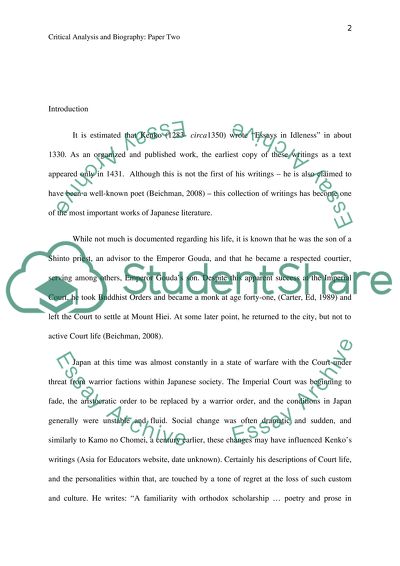Cite this document
(“Critical Analysis and Biography - Essays in Idleness - Kenko Research Paper”, n.d.)
Retrieved from https://studentshare.org/literature/1424998-critical-analysis-and-biography-essays-in-idleness
Retrieved from https://studentshare.org/literature/1424998-critical-analysis-and-biography-essays-in-idleness
(Critical Analysis and Biography - Essays in Idleness - Kenko Research Paper)
https://studentshare.org/literature/1424998-critical-analysis-and-biography-essays-in-idleness.
https://studentshare.org/literature/1424998-critical-analysis-and-biography-essays-in-idleness.
“Critical Analysis and Biography - Essays in Idleness - Kenko Research Paper”, n.d. https://studentshare.org/literature/1424998-critical-analysis-and-biography-essays-in-idleness.


